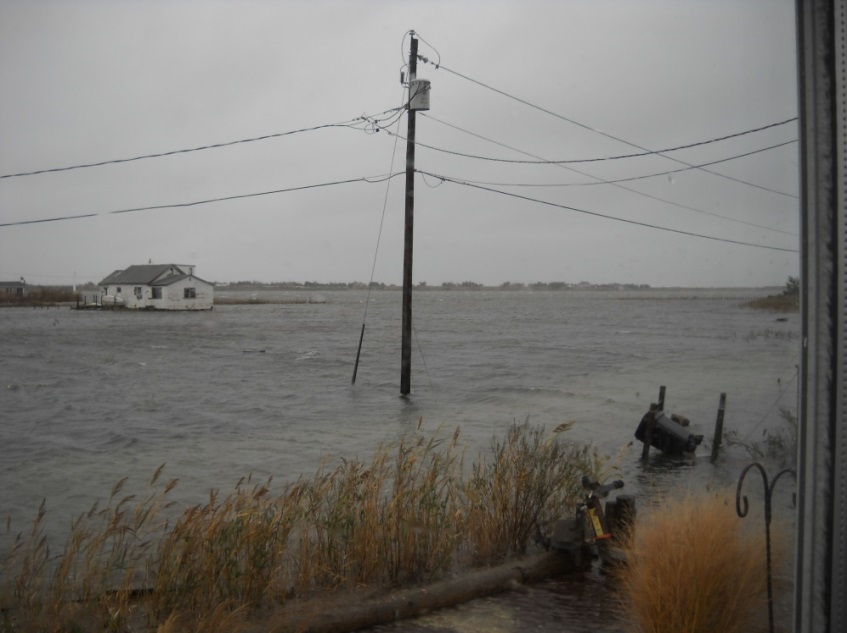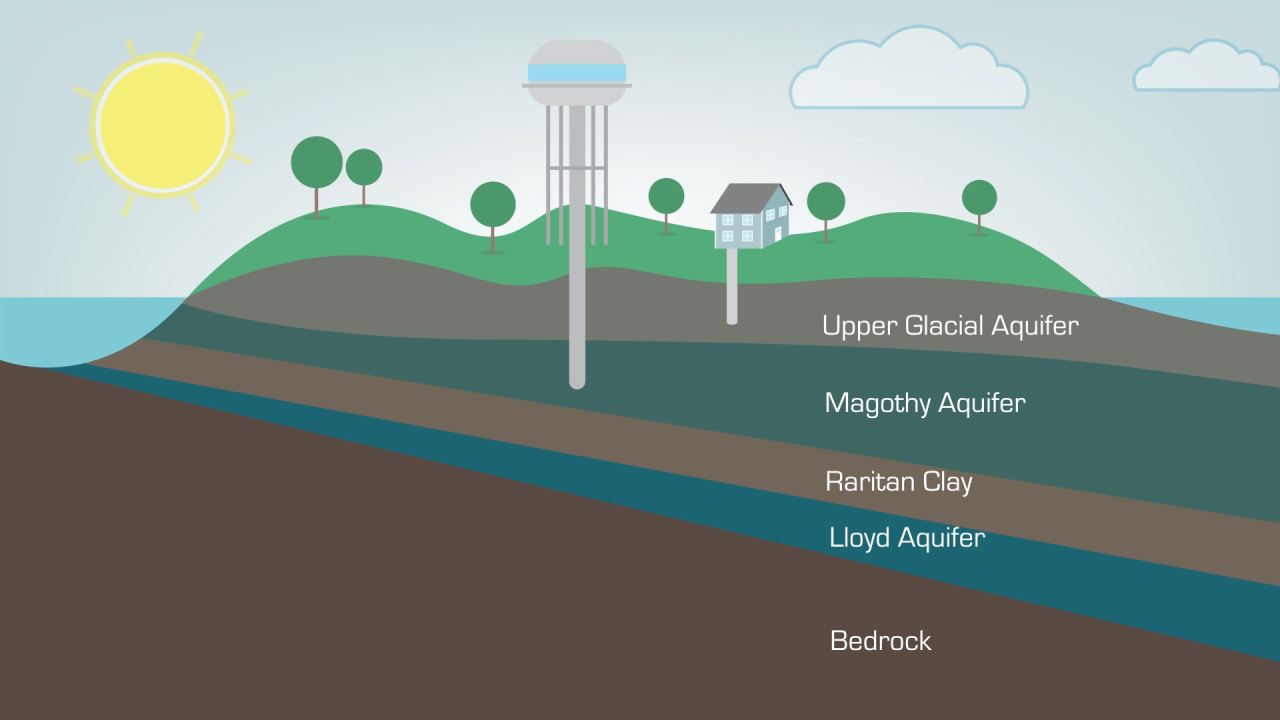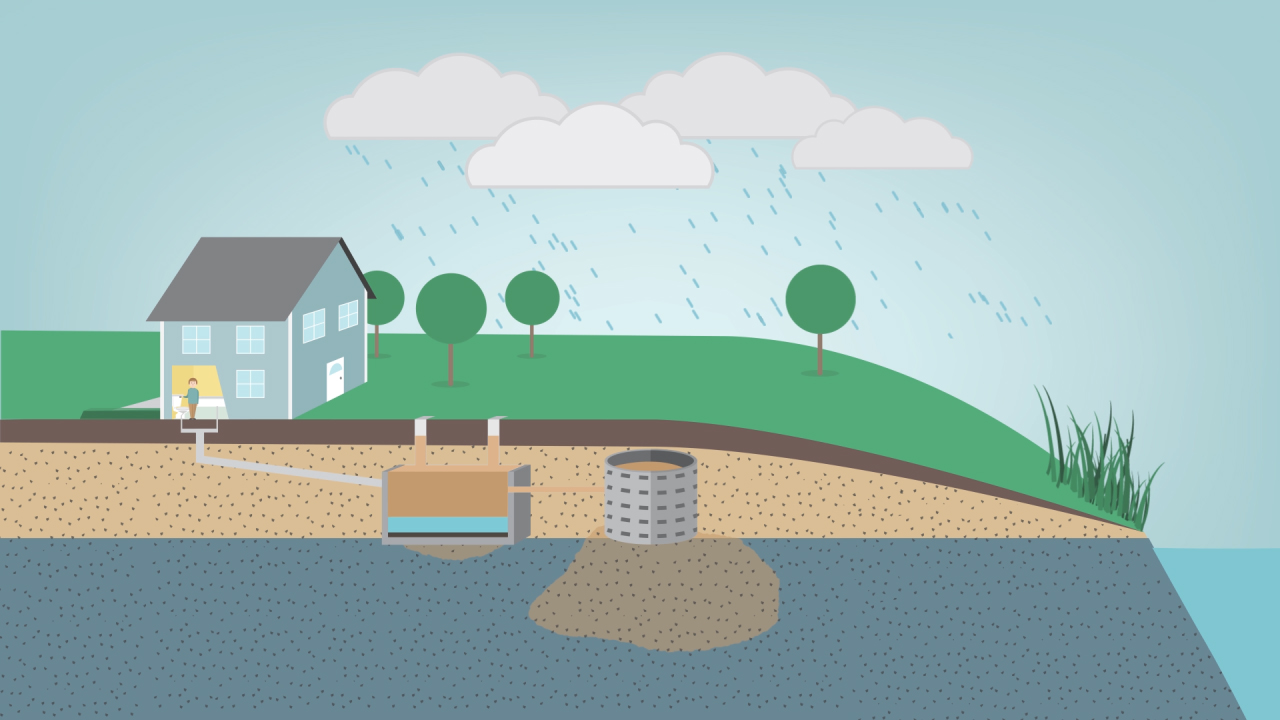Our Water Supply is Being Poisoned
All of our drinking water on Long Island comes from underground aquifers. This means that what we put on or in the ground can eventually end up in our drinking water supplies. This includes what we flush down our toilets and what we put on our lawns. Public water distributors are required to meet federal drinking water standards, but as the source gets increasingly polluted, it takes more and more money to bring our water up to safety standards—and no treatment to meet standards takes place for residents with private wells. It's cheaper and healthier to keep potentially dangerous substances out of our drinking water in the first place.
Our Septic Systems are Sitting Right on Top of the Water Table
In many areas of Mastic Beach, and elsewhere on coastal Long Island, the groundwater is so high that septic tanks are sitting in the water. Septic tanks are not designed to function in these conditions, and untreated sewage will mix with groundwater. In extreme conditions, waste can come to the surface, or back up via pipes, causing an obvious, and noxious, disturbance to residents. More commonly, there is no visible sign that a septic tank is not functioning, and the waste from a whole neighborhood can flow right into the groundwater for years without detection.
This is why Mastic Beach is one of the communities that Suffolk County has proposed for the creation of a new sewer district. Sewers will allow the waste to be treated properly, and stop much of the nitrogen from entering the bay.

How We Move Forward with Sea Level Rise
With the predictions for average sea level rise being measured in feet in the next hundred years, and the extremes, such as from storm surge, predicted to become more frequent and deep, areas such as Mastic Beach that are already flood zones are in increased danger. The community needs to consider not only where flooding has already occurred, but also where it is likely to occur in the future. Additionally, as sea levels rise, the groundwater level will also rise. This means that it's also important to look at the predictions for groundwater level rise when considering the placement of septic systems. There's little point in installing new technology that will be in the water and nonfunctional in a matter of years.
We're Such a Low-Lying Flood Zone
Mastic Beach is one of the lowest lying places on Long Island, and therefore it is highly vulnerable to rising seas and storm surges. The area was very heavily flooded during Superstorm Sandy in 2012.



